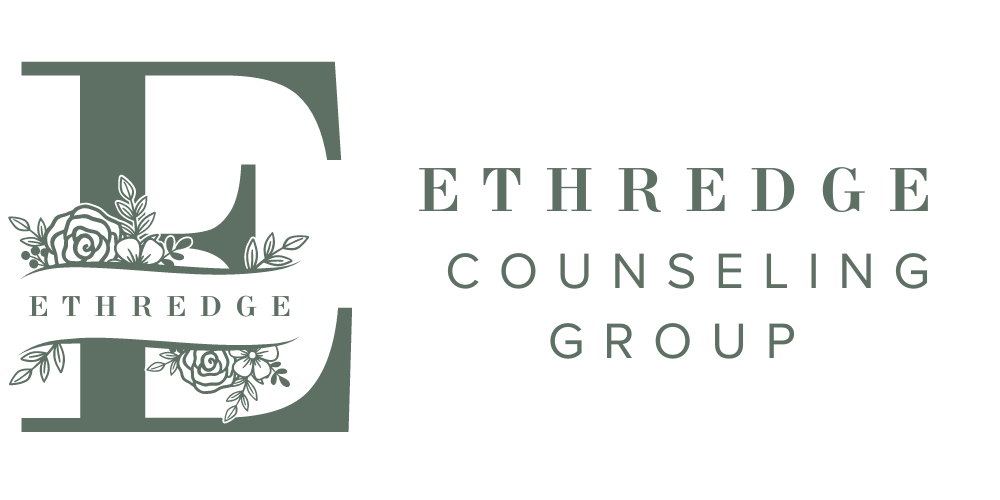
The ECG Blog
Growth Through Reconstruction: Creative Coping, pt III
Collaging & Vision Boarding: Growth through Reconstruction
You may read the word “collage” and immediately be taken back to elementary school with an assignment where you sorted through a big box of old magazines that had been used for years for some sort of history assignment.
Perhaps you think of vision boards and think “that’s a cute idea,” but I have no idea how one goes about making one or if it’s anything more than just a cute idea.
There is a unique power, however, that can come through the process of collaging.
Collaging is made by sticking a variety of materials, photographs, or cuttings together to a paper or backing to make one integrated creation.
Some of the benefits of collaging are that it offers the mindfulness of actually engaging in a craft (cutting, gluing, etc), which keeps your hands and mind busy and can be a wonderful distraction or hobby to divert your attention from anxiety or troubles.
It also finishes with an end “product” which can help offer feelings of productivity and a healthy sense of control or empowerment.
This experience of feeling like you have made something can be particularly useful in a time when life feels really out of control or if you're experiencing a sense of helplessness in your life at a given moment.
Healing Through Writing: Creative Coping, pt II
Creative writing has some exceptionally therapeutic opportunities. Writing provides an immediate release for our overwhelming and assuming thoughts and emotions. Releasing and identifying the words of your distress, joy, sadness, anger, pain, or insights allows you to be mindful of what your internal world is telling you instead of allowing it to overcome you. It also provides you an outlet so that the intensity of your internal world doesn’t have to be repressed or “bottled up.” Writing outlets include journaling, poetry, short story or screenplay writing, and more.
Journaling: The act of journaling offers many benefits including having a regular outlet for overwhelming thoughts, emotions, or anxieties as well as a self-reflective element. Especially if you know your journal is kept private it offers a perfect and safe space for you to write or express anything that you’ve been keeping in or have felt too afraid or ashamed to say out loud. It’s very common to only resort to journaling when you’re feeling overwhelmed as a form of release but it has more potential to be beneficial if it’s integrated as more of a routine practice. Writing about your day as a form of tracking events is helpful but being intentional about expressing or exploring your emotions that came up that day or writing about your past can be most beneficial. It’s also a wonderful tool to write out your raw thoughts that you would like to express to someone but you know it may be a little harsh or not as well received because anger is overwhelming. In that case, journaling about it first can help clear out some of the excess anger and organize your thoughts and feelings so that you can better express your frustrations, anger, needs, or boundaries more clearly.
Journaling prompt for feeling overwhelmed:
What’s happened/ happening? (i.e., sequential events and your response- what are you
afraid of, hurt \ by, angry about etc)
What thoughts are rushing in? (what are you believing about yourself, the world, or other
Parties? (I can’t trust this person anymore, I feel like I can’t do anything right)
What emotion do you feel? (I’m overwhelmed with anger and disgust, how could
someone do this? I feel so defeated and heartbroken, I can’t imagine my life without this person) (look at feelings wheel
What are you doing now in response: I’m going to eat dinner and snuggle with my dog
What can you hope for the future: (I will find someone else, I will find happiness again)
What’s two positive things you believe about yourself?
Journaling prompts for your routine journaling:
What are you grateful for in your life?
What are your curiosities about how your life could have turned out differently?
What are the moments in your life or attributes about yourself that you’re most proud of?
What emotions do you have the most difficulty connecting with and why? (look at
feelings wheel)
Explore more about visual journaling through collage in this blog (Growth through reconstruction)
Poetry: Poetry is the flowing river of creative writing. The rhythmic quality and hidden meanings and metaphors creates fluid and wide open space for mental and emotional expression with limited restraints. Therefore, practicing poetry is a great outlet for exploring topics, emotions, or experiences that feel overwhelming or difficult to get in touch with on your own.
One example: A Haiku for emotions:
My ___ (emotion) is _____ (one syllable word for color or sound)
Like _____ (name of city, a place, or a household item), ____and____ (2 descriptive adjectives) loud and flashing
It helps me ______ (two words)
Ex:
My anger is red
Like Hong Kong, loud and flashing
It helps me know me
My grief is quiet
Like coffee, still and daily
It helps me hold on
My love is pure pink
Like my porch swing, light and free
It helps me know you
Short Stories: Writing short stories offer a wonderful sense of distance to explore themes, situations, emotions, or hardships in your own life. It offers endless creative opportunities as you create settings and characters. As well as, potential for personal growth by exploring themes and coming up with your own resolutions or endings.
How to get started with a short story:
Who are your characters? What are their strengths and weaknesses? What do they look like? (Choose some characteristics to represent different parts of you: ex: someone sarcastic, someone depressed, someone joyful, someone always confused)
Where is the setting of your story? What is the culture, atmosphere, and sensual qualities?
What are the themes of the story? (ex. Grief, shame, isolation, misunderstandings, etc.)
What is the climax and resolution of your story?
Get to writing! You may surprise yourself with what you come up with!
Creative Coping, Part I: Getting Started
The power of creativity arrives from crossing the act of mindfulness with the act of letting go. The mindful and intentional approach of pouring yourself into a creative endeavor helps you connect to a positive activity outside of yourself and your anxious thoughts. This process allows you to detach without being avoidant and suppressing your feelings. The act of letting go helps to free yourself and your negative thought patterns from the regular pressures of societal or external forces and an acute relationship with control. Creativity is the art of making something from nothing and utilizing self-expression in the process. Creativity and art are overarchingly subjective therefore there is minimal control of how others will perceive your creation. Giving in to this subjectivity is practice for releasing the pressures to control others’ perspectives of ourselves.
Creativity is an incredible medium for supporting mental health. Creative action can help you to tap into the right side of your brain and helps to merge your logical and emotional mind. So often states of anxiety, depression and low self-esteem are generated by “overthinking,” “over rationalizing,” and negative thought cycles that are fueled in the logical and left side of our brain. Engaging in right brain activities offers reprieve from these cycles so we can create new positive thought cycles/ neuropathways.
Engaging with your “creative self” allows you to improve your thinking patterns by interacting with more curiosity and open-mindedness. This form of thinking is a refreshing change especially for those of us with exceptionally rigid thinking. Being creative also allows for emotional expression by offering a platform of interaction that gives us the space to engage with our emotions so that we are not overcome by them or suppressing them. If you're overwhelmed by a crushing wave of depression or overwhelming anxiety and panic, engaging in creative action helps to regain some sense of control and autonomy. Likewise, engaging with your creative self also allows you to feel a sense of satisfaction or mastery as you work on your craft. Whether you have finished it or not, you have a tangible sense of witnessing some sort of accomplishment. This can be particularly beneficial if you’re in a phase of experiencing helplessness or a lack of agency in your own life. One of the most powerful elements of engaging with your creative self is if you can eliminate the pressure of perfection or people pleasing you can engage with creativity in good humor. Embracing the subjectivity of your creation and laughing through the process helps to detach from the seriousness of having to perform for others.
There are endless ways to explore creative outlets and coping strategies that may go against your traditional conceptions of creativity. Coping by creating something can present in numerous ways. It can look like baking, cooking, drawing, pottery, woodworking, building with legos, graphic design, knitting, cross stitching, playing music, singing, dancing, interior design, and so much more. Exploring creative outlets to find out what connects most with you can help to connect with more of your own authenticity and also help you to connect with others by building community with people with similar interests!
How to choose a creative outlet:
Decide what areas you are interested in (building, cooking, art, crafting, etc)
Explore what modalities are most accessible (do you have the materials or are they affordable?)
Choose an outlet that feels comfortable and easy to connect with (ex: I love to cook!)
Set up time to explore this outlet
Choose an outlet or medium that feels adventurous or would push you (ex: I’ve always wanted to try poetry)
Set up time to explore this outlet 1-2 times a week
If either outlet doesn’t feel authentic or is too difficult to accomplish, try another!



